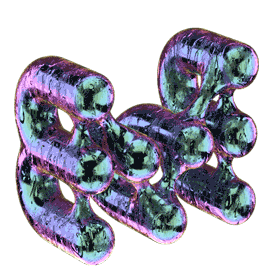





















Small Talks with Fires
Small Talks with Fires
Open by appointment
00420 774 905 194
Iveta Schovancová
Hynek Alt
feat. Oliver Torr
In collaboration with
Jáchym Kachlík
Ondřej Konrád
Welcome to the app. Burn Register. The application is used to report a planned burn to the local fire department. Reporting a burn does not lead to its approval; it is merely reported to the Operations and Information Center of the Fire Rescue Service. The report serves solely for the purpose of checking the location of the burn against possible fire reports. Report a burn without registration. If you would merely like to report an individual burn, registration is not required. To report a burn without registration, continue by clicking the button below. Submit a new burn.
In their Small Talks with Fire, Hynek Alt and Iveta Schovancová light torches. They make them from collected waste. They film their ignition in slow motion. They screen the footage in the gallery.
What if, instead of grant applications, residency applications, and exhibition texts, they wrote reports on planned fires, as firefighters are required to do for safety reasons? What if, instead of the usual strategic planning, theory development, and propping up a thesis on an appropriate authority, we could simply start a fire and then maintain it by adding fuel as needed?
Thematically, one could stoke it with different volumes that are somehow related to the fire. This would hopefully clarify what fire (or with what fire) we are actually discussing. Or not discussing. The first books at hand would be the dusty tomes of Gaston Bachelard. In The Flame of a Candle, Bachelard turns to the literary archive of fire metaphors and writes of that dreamy gazing into a flame, in which he recognizes a source of poetics. But Small Talks with Fire is not so poetic. It is neither metaphorical nor symbolic. While the burning assemblages admit an infinity of meanings and interpretations in their concreteness, the result is the same as if they had admitted none. The comfortable refuge that contemporary art likes to find in ambiguity and multiple meanings burns before our eyes here, although not at a uniform rate.
Bachelard opens The Psychoanalysis of Fire with the claim that fire defies scientific knowledge because it better suits immediate conviction than experience and measurement. Flames thus flicker against affects the same as they do against images. When speaking of fires and images, one cannot ignore the exposition of a burning aesthetics recently put forward by T. J. Demos. The text was published online, so we can’t toss anything on the fire except for a respective device. Demos writes about the ever-accumulating photographs of ever-expanding forest fires. Such images, he argues, are insidiously seductive to aesthetic contemplation. On the one hand, they inspire paralyzing horror; on the other hand, no one’s responsibility can be inferred from them. Demos’s aesthetics of burning is simultaneously a burning aesthetics. For in the era of the pyrocene, images of extinction conceal the extinction of our ability to perceive images. It is not about images of ecosystems but rather about the ecosystems of which the images are a part.
In the end, Octavia E. Butler may offer the most suitable firewood in her Parable of the Sower when she describes a fictional drug called “pyro.” The name is an abbreviation of the word pyromania, in which users of the drug indulge inordinately. Slow-motion footage facilitates technologically enhanced vision. The more images there are, the slower they appear to move. Flames we otherwise wouldn’t see accompany the smoke we inhale all the same. The object emits light; it is visible. The light consumes it; it disappears. Until another appears, elsewhere. Like the reflections of distant forest fires on touchscreens. All that remains is voyeuristic curiosity in slo-mo.
Text : Vojtěch Märc
Thanks to:
Antonín Jirát, Michal Pustějovský, Milan Mazúr, Fakulta designu a umění Ladislava Sutnara, ZČU v Plzni, Jan Maštera, FAMU v Praze, Artur Magrot, Akademie výtvarných umění v Praze, Viktor Takáč, Jana Doležalová, Jan Vidlička, DigiLab AVU v Praze, Jimena Mendoza, Radka Jahnová



